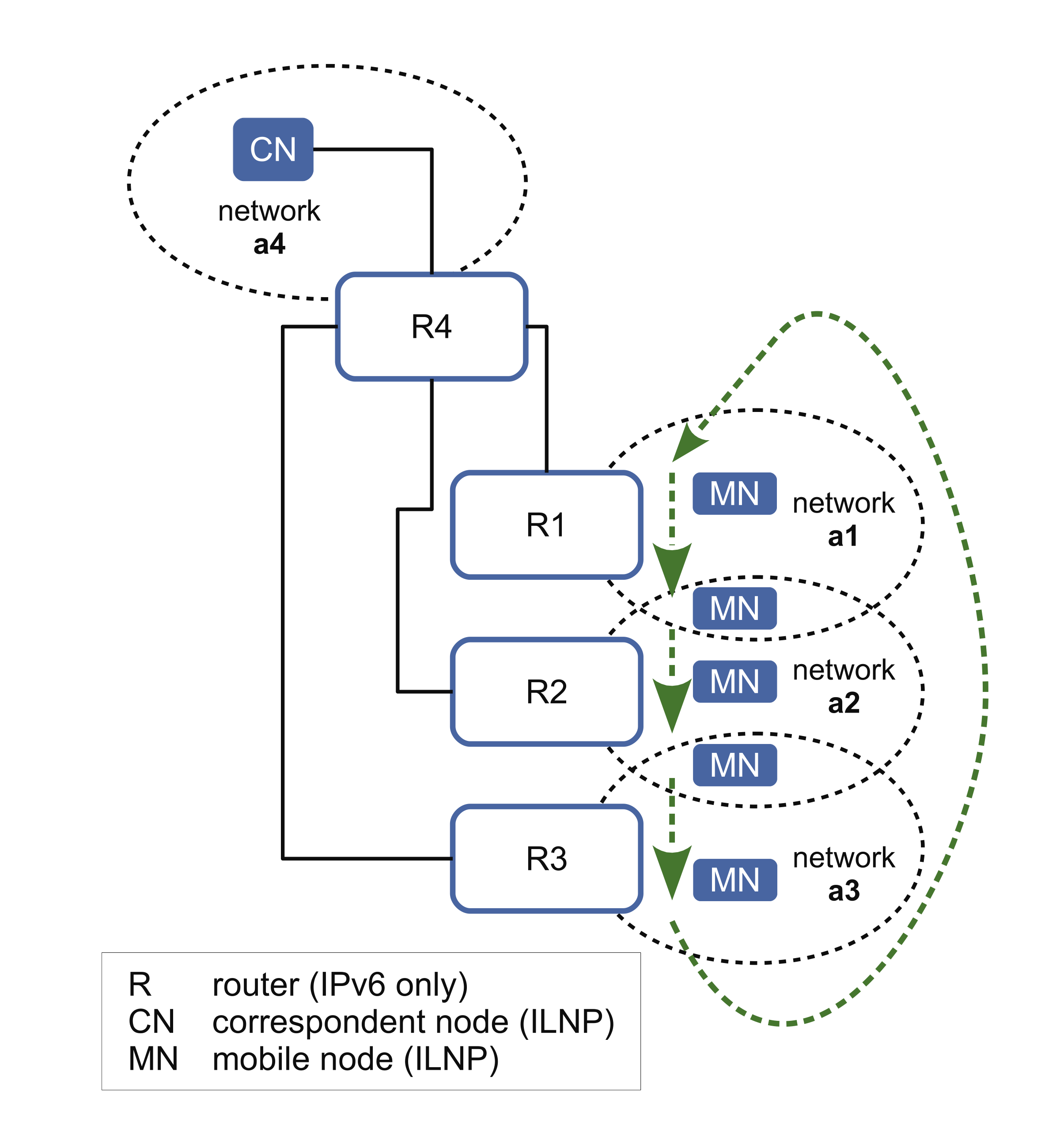School of Computer Science
 Updated 22 January 2020 by saleem.
Updated 22 January 2020 by saleem. © 2006-2020, All Rights Reserved.
ILNP - Identifier-Locator Network Protocol: video streaming demonstration
Demonstration testbed and video demo by Ryo Yanagida.
This video demonstrates a feature of the Identifier Locator Network Protocol (ILNP): how ILNP integrates mobility as an end-to-end function, as part of the core network protocol behaviour, rather than relying on routing or other network / middlebox assistance. ILNP does this in a way that native IPv6 applications benefit directly, without needing to be modified, working directly over an existing IPv6 network.
ILNP has also been demonstrated publicly at the Hackathon which took place at the 104th meeting of the Internet Engineering Task Force (IETF).

What you see is a video playing in the background (on the monitor), being streamed from the machine on the left (server / correspondent node, CN), played back on the machine on the right (client / mobile node, MN), which is connected to the screen. The video is 1080p/HD, H.264 (in a MP4 container), a copy of an opensource video ("Tears of Steel") hosted on the server. The network between the two machines has the topology as described in [1], i.e. four different networks — R1, R2, R3, and R4 — with statically-configured (fixed) routing throughout. The network consists of cheap-and-cheerful Ubiquiti routers (3x EdgeRouter-X for R1, R2 and R3; an EdgeRouter-6P for R4 — in the foreground, middle of the screen), i.e. a network of unmodified, off-the-shelf, commercial equipment that is not "ILNP-aware". The server is connected to R4, and the client is connected initially to R1. The software being used for client and server is the popular, opensource, VLC software, i.e. unmodified software that is also not "ILNP-aware".
Ryo connects and disconnects various ethernet interfaces on the MN/client (use of red, blue, and yellow cables on the right), to emulate movement of the MN/client across the different networks, R1, R2, and R3. The video stream is handed-off seamlessly across the new connectivity, with no loss or interruptions (VLC was using RTP/UDP). No routing changes, no tunnels, no middleboxes, no NAT, no need to upgrade network equipment, and no need to upgrade existing software: the seamless mobility of the stream was enabled via the ILNP Linux kernel extensions that are now publicly available. (More details and experiments on the mobility mechanism for ILNP can be found in [2].)
The ILNP kernel extensions used in this demo is are on github at: https://ilnp.github.io/ilnp-public-1/. Please do complete the questionnaire that is linked on that page — it will help us in trying to progress support for further development of ILNP!
References
[1] R. Yanagida, S. N. Bhatti. Seamless Internet connectivity for ubiquitous communication. PURBA2019, Pervasive Urban Applications Workshop (UBICOMP 2019). London, UK. Sep 2019. (ACM digital library copy.)
[2] D. Phoomikiattisak, S. N. Bhatti. End-To-End Mobility for the Internet Using ILNP, Wireless Communications and Mobile Computing (WCMC), vol. 2019, Article ID 7464179, pages 29. Apr 2019. (Open access copy.)
Thanks
Many thanks to our friends at RStor, whose support made this testbed and demonstration possible.